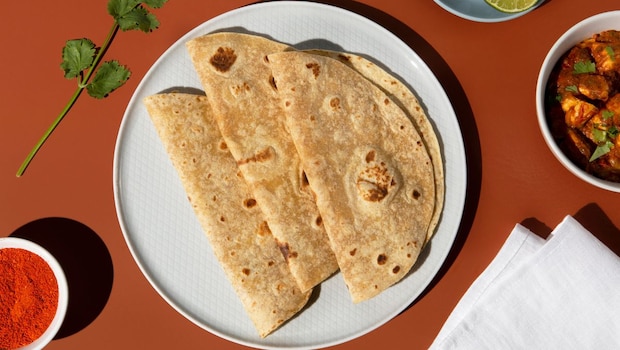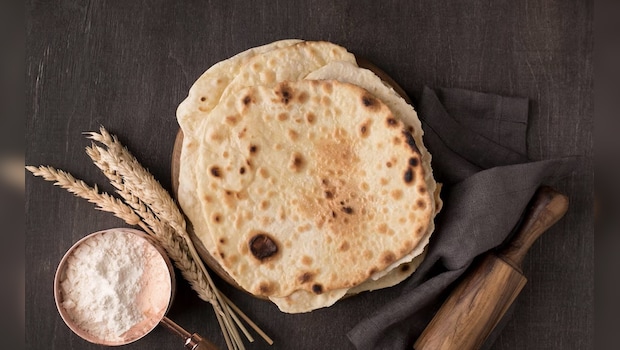Roti, paratha and more...breads are a staple across the country. They are central to everyday nourishment, regional pride and culinary expression. From the tender tear of a North Indian paratha to the flavourful South Indian akki roti, variety of Indian breads mirrors the diversity of its people. You will find fluffy naans served during celebrations, flaky parottas layered in street-side stalls, puris puffed up for Sunday brunch and rumali rotis that drape like silk on a Mughlai platter. Yet, amidst this variety, two prominent breads remain daily staples across millions of homes - they are roti and bhakri. While they might share the same tawa, their stories, textures and nutritional impact are vastly different.
In this feature, we will explore what sets them apart, why health experts weigh in on their benefits and how your choice between roti and bhakri could reflect not only your lifestyle but also your region, routine and even your preferred food app order.
Roti Vs. Bhakri: The Classic Face-Off
What Is A Roti?
Roti, also known as chapati in many parts of India, is a thin, unleavened bread made using atta, water and a hint of oil or ghee. It is usually cooked on a hot tawa and sometimes puffed directly on the flame. It is soft, flexible and made fresh in most homes every single day. Rotis are light, easy to digest and pair well with almost every Indian dish, from paneer to palak to dal fry.
According to nutrition expert Dr. Ritika Samaddar, roti made with whole wheat can be a good source of complex carbs and fibre if consumed in moderation. She explains, "The glycaemic index of whole wheat roti is lower than refined wheat products, making it suitable for those trying to manage blood sugar."
Also Read: Indian Cooking Tips: How To Make Naan On Tawa - Step-By-Step Recipe Video

Photo Credit: iStock
What Is A Bhakri?
Bhakri is a thick, coarse, hand-pressed flatbread made using flours like jowar, bajra, ragi or rice flour. Unlike roti, bhakri requires a more rustic handling, usually pressed by hand instead of rolled out, and cooked slowly on a tawa until slightly crisp. It is a staple in Maharashtrian, Gujarati and tribal cuisines, often enjoyed with spicy chutneys, garlic thecha or leafy greens.
Bhakri carries strong nutrition benefits, especially when made with millet flours. For the unversed, millets are gluten-free, rich in minerals like iron and magnesium, and help improve gut health. Dietician Kavita Devgan notes, "Millets in bhakris boost satiety, reduce bloating and keep energy levels consistent throughout the day."
Also Read: Love South Indian Food? Try Out These 8 Classic Breads Made From Rice

Photo Credit: iStock
Key Differences Between Roti And Bhakri:
Feature | Roti | Bhakri |
| Flour Type | Atta | Jowar, Bajra, Ragi |
| Texture | Soft, light | Thick, slightly crispy, earthy |
| Cooking Style | Quick tawa-cooking, optional puffing | Slow-cooked, hand-pressed |
| Nutritional Value | Good source of fibre, carbs | Gluten-free, high in iron and minerals |
| Satiety | Light, may leave you hungry sooner | Keeps you full for long |
| Calorie Count | Low | Low |
Roti Or Bhakri: Which One Is A Better Choice?
It depends on your health goals, taste preferences and even the climate you live in. If you are someone who prefers lighter meals, rotis might fit into your routine better. They are quick to make and easy to digest. But if you are leaning towards a high-fibre, mineral-rich diet, or managing gluten sensitivity, bhakris made with jowar or bajra are excellent options.
During colder months or after a heavy physical day, bhakri tends to keep energy sustained longer. In fact, today professional chefs are bringing bhakri back into urban menus as part of millet-forward thalis and wholesome takeaway meals.
Wellness expert Dr. Shikha Sharma explains, "Think of bhakri as your weekend fuel and roti as your weekday staple".
- For Diabetes Management: Bhakris made with jowar or bajra have a lower glycaemic load and help in slower glucose absorption.
- For Weight Loss: Rotis may be lower in calories but need mindful portioning.
- For Energy: Bhakri offers complex carbs and micronutrients, which are ideal for stamina-building.
Also Read: How To Make Soft And Tasty Cheeni Paratha In Minutes: Quick Guide Inside

Photo Credit: Pixabay
The Bottom Line:
Both roti and bhakri have their own share of benefits and choosing between the two does not have to be a battle. Instead, it can be a rotation. If you are experimenting with millet recipes, bhakri opens up interesting possibilities. And if you are running late, rotis are the quick fix. Even, several food delivery platforms now offer customised thalis with your choice of bread, so swapping between the two gets easier than ever.
Disclosure: This article may contain links to third-party websites or resources. However, this does not affect the integrity of the content, and all recommendations and views are based on our independent research and judgment.
About Somdatta SahaExplorer- this is what Somdatta likes to call herself. Be it in terms of food, people or places, all she craves for is to know the unknown. A simple aglio olio pasta or daal-chawal and a good movie can make her day.





